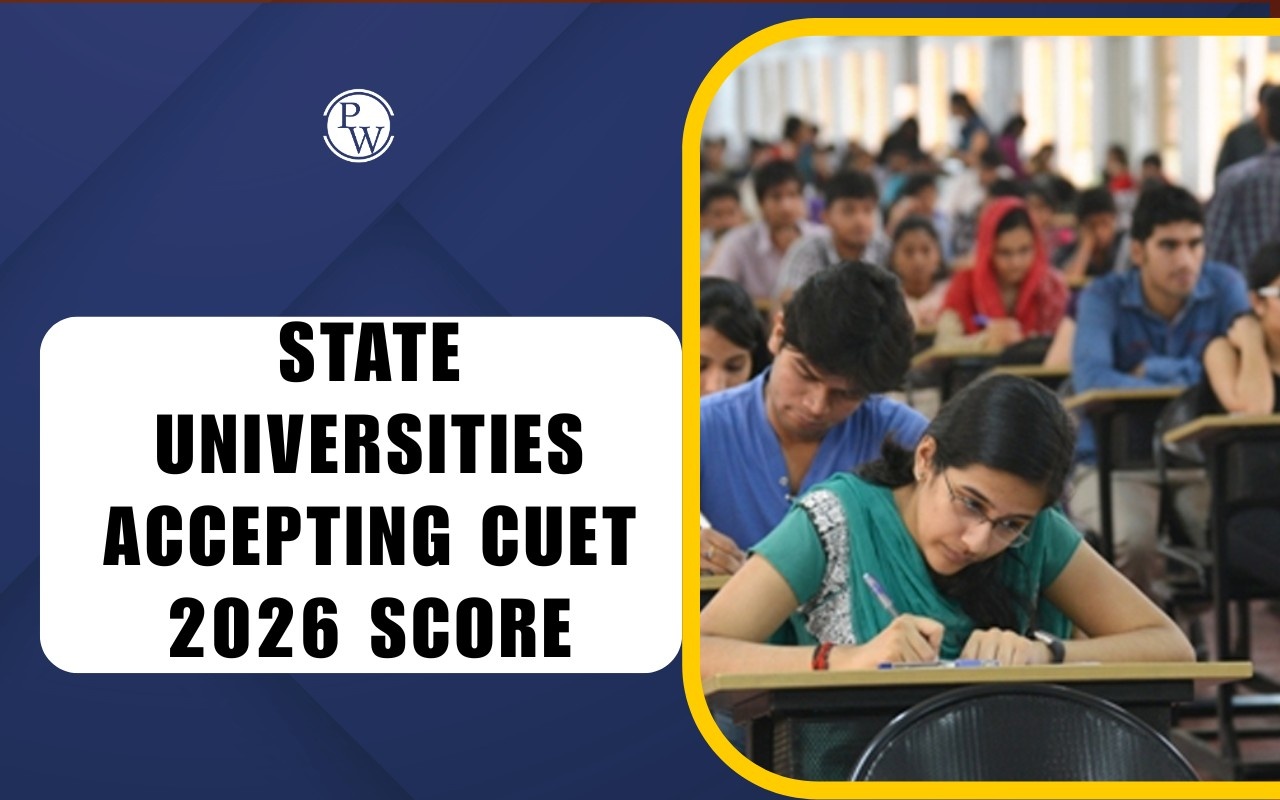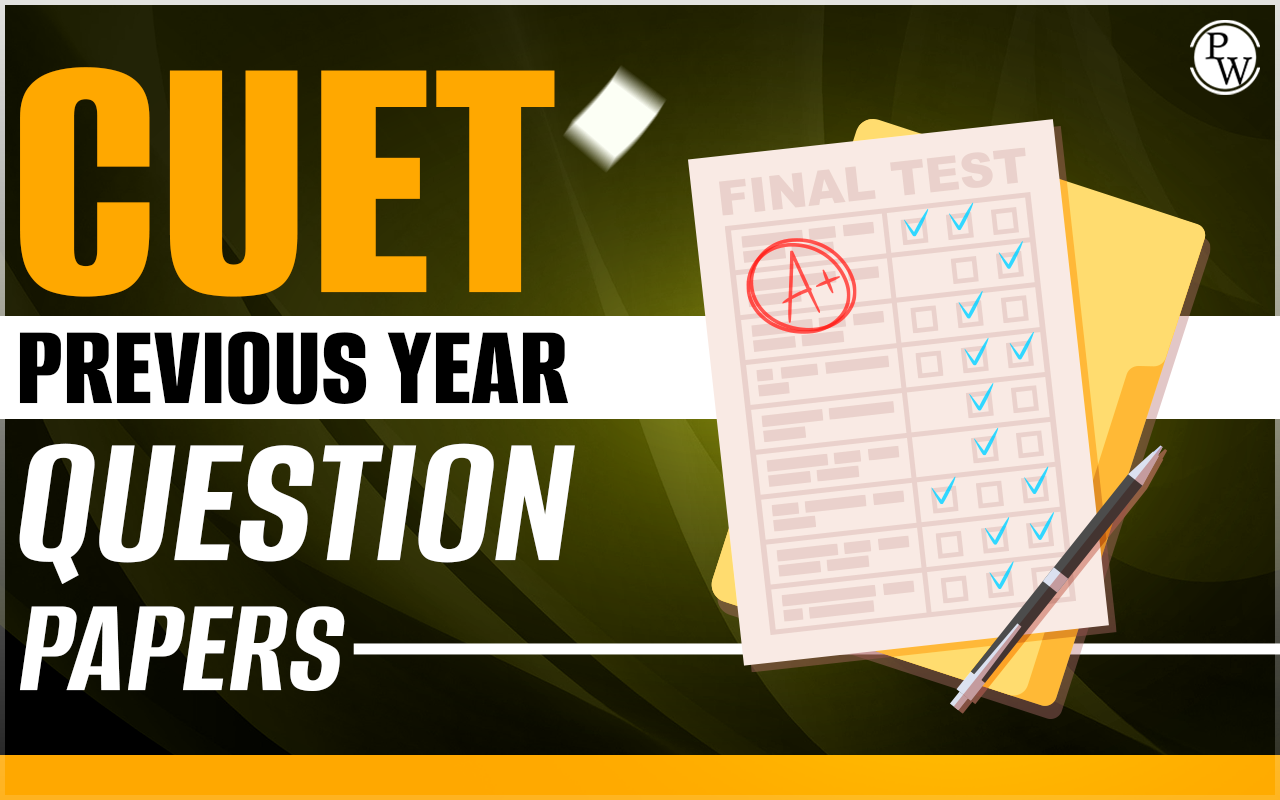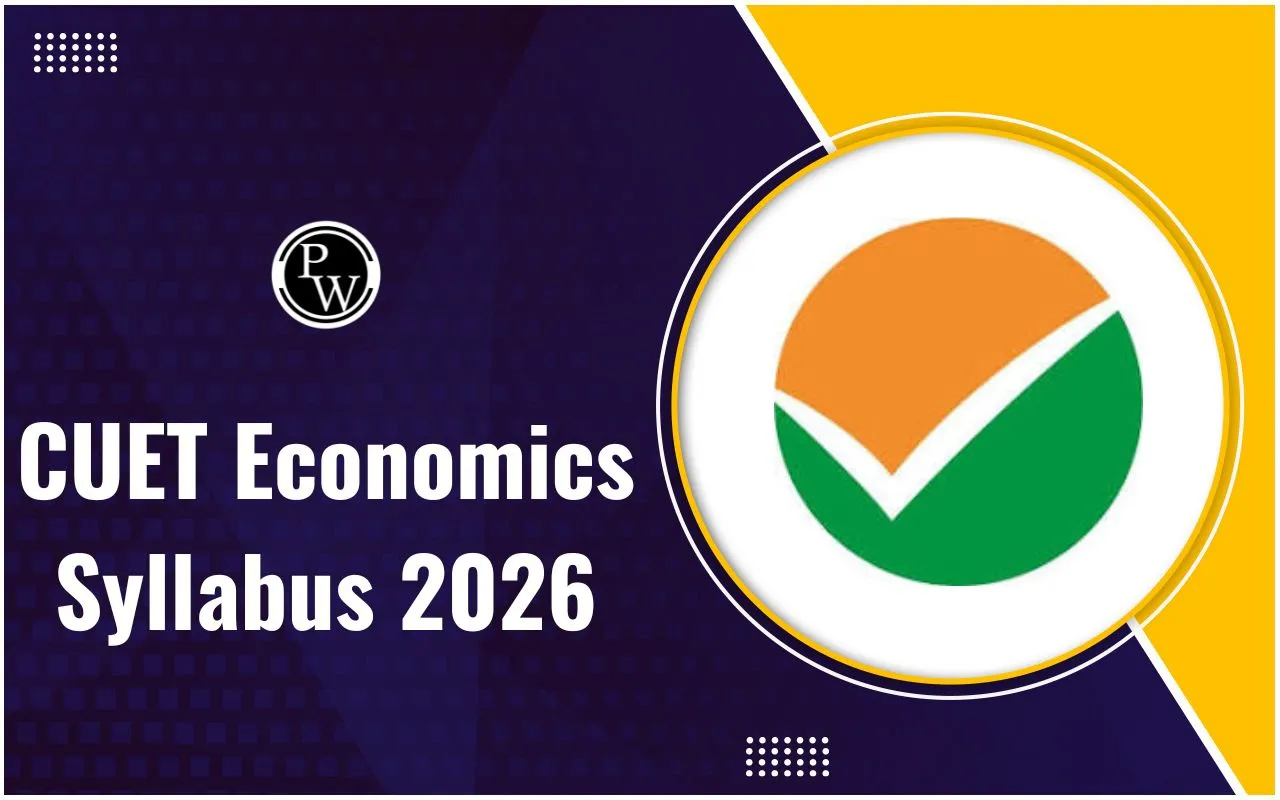

Domain Subjects in CUET 2026: The CUET 2026 offers a diverse range of domain subjects for undergraduate courses, enabling students to secure admission to their preferred universities. There are 23 subjects, including Accountancy, Agriculture, Anthropology, Biology, Biotechnology,
Biochemistry, Business Studies, Chemistry, Computer Science, Economics, Environmental Studies, Fine Arts, Geography, History, Home Science, Knowledge Tradition and Practices of India, Mass Media, Mathematics, Performing Arts, Physical Education, Physics, Political Science, Psychology, Sanskrit, and Sociology.
These subjects form Section 2 of CUET and are based mainly on the Class 12 NCERT syllabus. Choosing the right domain subjects is crucial because it affects both eligibility and performance in the exam.
What is CUET Domain Subject 2026?
CUET Domain Subjects 2026 are the core subjects that students must take to qualify for their chosen undergraduate course at a university. These subjects are part of Section 2 of CUET and must be selected based on the course you want to pursue.
For example, if you wish to enroll in a BA in Economics, you would choose subjects like Economics, Mathematics, or other relevant options. There are 23 main domain subjects in CUET 2026:
-
Accountancy
-
Agriculture
-
Anthropology
-
Biology/ Biotechnology/ Biochemistry
-
Business Studies
-
Chemistry
-
Computer Science/ Informatics Practices
-
Economics/ Business Economics
-
Environmental Studies
-
Fine Arts/ Visual Arts
-
Geography/ Geology
-
History
-
Home Science
-
Knowledge Tradition and Practices of India
-
Mass Media/ Mass Communication
-
Mathematics
-
Performing Arts
-
Kathak
-
Bharatnatyam
-
Oddisi
-
Kathakali
-
Kuchipudi
-
Manipuri
-
Hindustani
-
Carnatic
-
Rabindra Sangeet
-
Percussion & Non-Percussion
-
-
Dance
-
Drama - Theatre
-
Music General
-
Physical education/ NCC/ Yoga
-
Physics
-
Political Science
-
Psychology
-
Sanskrit
-
Sociology
CUET Domain Subjects 2026 Overview
CUET 2026 is a centralized exam for undergraduate admissions across India. Section 2 includes domain subjects, which are compulsory and must be selected according to your desired course and university. There are 23 subjects, each carrying 250 marks, and choosing the right subjects is important for eligibility and exam performance.
|
CUET Domain Subjects 2026 Overview |
|
|
Feature |
Details |
|
Exam Name |
CUET 2026 (UG) |
|
Type |
Centralized entrance exam for undergraduate admissions |
|
Section |
Section 2 – Domain Subjects |
|
Number of Domain Subjects |
23 |
|
Marks per Subject |
250 |
|
Question Type |
Multiple Choice Questions (MCQs) |
|
Questions per Subject |
50 (all compulsory) |
CUET Marking Scheme 2026
The domain subjects in CUET UG are part of Section 2. The CUET syllabus and marking scheme for these subjects are as follows:
|
CUET Marking Scheme 2026 |
|
|
Criteria |
Details |
|
Syllabus |
Based on Class 12 syllabus (mainly NCERT) |
|
Correct Answer |
+5 marks |
|
Incorrect Answer |
-1 mark |
|
Unattempted Answer |
0 marks |
How to Map Domain Subjects in CUET with UG Courses?
After knowing the CUET UG domain subjects, it is important to map them with your desired undergraduate courses and universities. Each university may have specific subject requirements for different courses. To check which CUET subjects you need for your course, you should visit the official CUET website and follow these steps:
-
Visit the official CUET website.
-
Look for the list of participating universities.
-
Click on your preferred university.
-
Check the exam pattern and eligibility criteria for your course, including the required CUET domain subjects.
-
Make sure to select the right subjects based on your chosen course and university.
How to Select Domain Subjects in CUET 2026?
Once you know the CUET domain subjects list, it is important to understand how to select them and how many you can choose. You can select a maximum of 5 subjects, including languages and the CUET General Test. Ideally, choose 2–3 subjects based on the course you want to pursue. The choice of subjects will depend on your desired university and course requirements.
Before selecting subjects visit the university or college website where you want admission. Check the courses offered, eligibility requirements, and the specific test combinations required for your course.
You are free to choose one or more tests according to the university’s rules. For CUET DU admissions, you must appear in the Languages/Domain-Specific Subjects in which you appeared or passed in Class XII.
Examples:
-
If your main choice is BA, but you want B.Com as a backup, you can select up to 5 subjects to cover both courses.
-
For B.Sc, B.Com, or BA, choose a combination of 3–4 domain subjects plus 1 language or 1 General Aptitude Test to be eligible for maximum universities.
Domain Subjects in CUET 2026 for BHU
Choosing the right domain subjects in CUET 2026 is crucial for securing admission to Banaras Hindu University. Each undergraduate course has specific CUET subject requirements, and selecting them carefully ensures eligibility and maximizes your chances of admission.
|
Domain Subjects in CUET 2026 for BHU |
|||
|
Degree |
Programme/Course Offered |
CUET Subject Mapping |
Eligibility |
|
Bachelor of Arts (Hons.) |
Economics, History, Political Science, Sociology, Psychology, Geography, Arabic, Bengali, Hindi, Persian, Pali, Sanskrit, Urdu, English, Japanese, Chinese, German, French, AHIC & Archaeology, History of Art, Philosophy, Linguistics, Home Science, Music (Instrumental/Vocal), Painting, Education, Dance (Kathak/Bharatnatyam) |
1. Language Test – English (101) or Hindi (102) 2. General Aptitude Test (501) |
Passed 10+2 with minimum 50% marks. For B.A. Major/Minor in Economics, Mathematics must have been studied. Age ≤ 22 years on 1st July 2026 |
|
B.A. (Hons.) LL.B. |
B.A. (Hons.) LL.B. |
1. Language Test – English (101) or Hindi (102) 2. General Aptitude Test (501) |
Completed/appearing in 10+2 or equivalent. Minimum marks: 50% (Gen), 45% (OBC), 40% (SC/ST). Open university candidates without basic qualification not eligible |
|
B.Com (Hons.) / B.Com (Hons.) – Financial Market Management |
B.Com (Hons.) / B.Com (Hons.)- Financial Market Management |
1. Subject Test – Accountancy/Book Keeping (301) 2. Subject Test – Business Studies (305) 3. General Aptitude Test (501) |
Passed 10+2 in Commerce/Economics/Maths/Finance etc., minimum 50% aggregate. Age ≤ 22 years |
|
B.Sc (Hons.) in Agriculture |
Agriculture |
1. Chemistry (306), Mathematics (319), Physics (322) OR 2. Biology (304), Chemistry (306), Physics (322) OR 3. Agriculture (302), Biology (304), Chemistry (306) |
Passed 10+2 in Agriculture or Science (PCM/PCB), minimum 50% marks. Age 16–25 years |
|
B.Sc (Hons.) – Bio Group |
Botany, Chemistry, Zoology, Home Science, Geography, Earth Science |
1. Biology (304) 2. Chemistry (306) 3. Physics (322) |
Passed 10+2 with Physics, Chemistry, and Biology/Geology/Geography. Min 50% marks. Age ≤ 22 years |
|
B.Sc (Hons.) – Maths Group |
Mathematics, Statistics, Computer Science, Physics, Chemistry, Geography, Earth Science |
1. Chemistry (306) 2. Mathematics (319) 3. Physics (322) |
Passed 10+2 with PCM or relevant combination. Min 50% marks. Age ≤ 22 years |
|
B.Tech – Dairy Technology / Food Technology |
Dairy Technology / Food Technology |
1. Chemistry (306) 2. Mathematics (319) 3. Physics (322) |
Passed 10+2 with PCM or PCMB. Min 50% marks. Age 17–25 years |
|
B.Voc – Fashion Technology & Apparel Designing |
Fashion Technology & Apparel Designing |
1. Language Test – English (101) or Hindi (102) 2. General Aptitude Test (501) |
Passed 10+2 or equivalent/NSQF Level 4 certificate, min 50% aggregate. Age ≤ 22 years |
|
B.Voc – Modern Office Management |
Modern Office Management |
1. Language Test – English (101) or Hindi (102) 2. General Aptitude Test (501) |
Passed 10+2 or equivalent/NSQF Level 4 certificate, min 50% aggregate. Age ≤ 22 years |
|
B.Voc – Food Processing & Management |
Food Processing & Management |
1. Chemistry (306), Mathematics (319), Physics (322) OR 2. Biology (304), Chemistry (306), Physics (322) OR 3. Agriculture (302), Biology (304), Chemistry (306) |
Passed 10+2 or equivalent in Science/NSQF Level 4 certificate, min 50% aggregate. Age ≤ 22 years |
|
B.Voc – Hospitality & Tourism Management |
Hospitality & Tourism Management |
1. Language Test – English (101) or Hindi (102) 2. General Aptitude Test (501) |
Passed 10+2 or equivalent/NSQF Level 4 certificate, min 50% aggregate. Age ≤ 22 years |
|
B.Voc – Medical Lab Technology |
Medical Lab Technology |
1. Language Test – English (101) or Hindi (102) 2. Biology/Biotechnology (304) |
Passed 10+2 or equivalent/NSQF Level 4 certificate, min 50% aggregate. Age ≤ 22 years |
|
B.Voc – Retail & Logistics Management |
Retail & Logistics Management |
1. Language Test – English (101) or Hindi (102) 2. General Aptitude Test (501) |
Passed 10+2 or equivalent/NSQF Level 4 certificate, min 50% aggregate. Age ≤ 22 years |
|
BFA |
Applied Arts/Painting/Plastic Arts |
1. Fine Arts/Visual Arts/Commercial Arts (312) |
Passed 10+2 or equivalent exam, min 50%. Final merit includes CUET + Practical. Age ≤ 22 years |
|
BPA |
Vocal/Instrumental/Dance |
1. Performing Arts (320) |
Passed 10+2 or equivalent exam, min 50%, plus 55% in practical exam or relevant diploma. Age ≤ 35 years |
|
Shastri (Hons.) |
Veda, Vyakarna, Sahitya, Jyotish, Vaidik Darshan, Dharmasastra & Mimansa, Jain-Buddha Darshan |
1. Sanskrit (325) |
Passed 10+2 or equivalent with Sanskrit. Minimum 50% marks. Age ≤ 22 years |
|
B.Sc (Hons.) – Medical Technology (Radiotherapy) |
Medical Technology (Radiotherapy) |
1. Chemistry (306), Mathematics (319), Physics (322) OR 2. Biology (304), Chemistry (306), Physics (322) |
Passed 10+2 with PCM or PCB. Min 50%. Age ≤ 23 years |
|
B.Sc (Hons.) – Medical Radiology & Imaging Technology |
Medical Radiology & Imaging Technology |
1. Biology (304), Chemistry (306), Physics (322) |
Passed 10+2 with PCB. Min 50%. Age ≤ 23 years |
How to Prepare for Domain Subjects in CUET 2026?
To score well in CUET 2026, it is important to prepare your domain subjects carefully. Follow these steps to plan your study and strengthen your knowledge:
Know the Syllabus:
-
Check the full syllabus for each domain subject.
-
Focus on CUET high-weightage topics.
-
The syllabus is mostly based on Class 12 NCERT textbooks.
Start with Easy Topics:
-
Begin with topics you understand well.
-
Move to difficult topics later.
Study NCERT Books Thoroughly:
-
Read textbooks carefully to build a strong foundation.
Practice from Other Books:
-
Use reference books for sample questions and extra practice.
Solve Previous Papers and Mock Tests:
-
Practice CUET past papers for your chosen subjects.
-
Take mock tests to improve speed and accuracy.
Regular Revision:
-
Revise topics often to strengthen weak areas.
-
Keep practicing until you improve.
Manage Your Time:
-
Give enough time to each subject.
-
Avoid last-minute cramming to reduce stress and mistakes.
CUET Domain Subjects 2026 Important Points
Choosing the right domain subjects in CUET 2026 is important for securing admission to your desired university. Proper planning and focused preparation can make a significant difference in your performance.
-
There are 23 domain subjects in CUET.
-
Go through the university website to know the specific subject requirements.
-
Once you have selected your subjects, give each subject adequate preparation time.
-
Understand the exam syllabus thoroughly for each subject you choose.
-
Study NCERT textbooks in detail and practice as much as possible.
-
Create short notes for each domain subject to help with quick revision.
Physics Wallah provides CUET UG Online Coaching with live classes, study materials, and practice tests. The courses are designed to make learning simple and effective, helping you prepare for your CUET UG exams with ease.
Domain Subjects in CUET 2026 FAQs
What are Domain Subjects in CUET 2026?
How many Domain Subjects in CUET 2026 can a candidate choose?
Are the Domain Subjects in CUET 2026 compulsory?
What is the syllabus for Domain Subjects in CUET 2026?
How to map Domain Subjects in CUET 2026 with my UG course?













